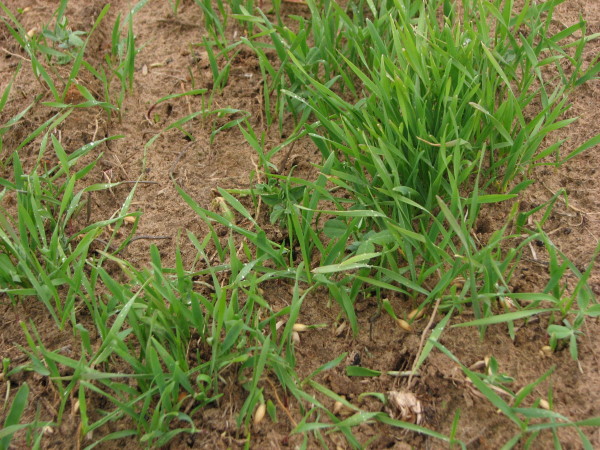Cover Crops
Some of you may have heard of farmers using cover crops in their fields and you might be wondering, what’s that all about? Cover crops are used for a wide variety of reasons, and different crops can provide different benefits to the farmer. Here are a few reasons why we use them:
- to increase the soil fertility
- to protect the soil surface from harsh weather conditions like wind or baking sun
- to build nitrogen levels
- to bulk up the organic matter
- to increase water and nutrient holding capacity of the soil
- to crowd out weeds
- to attract and provide habitat for beneficial insects
- to reduce soil erosion in between growing seasons
- to provide a food source to the bugs and microbes living in the soil
We use several different cover crops depending on the time of year and the intentions we have. Later in the year you may catch a glimpse of the other plants we use as cover crops throughout the year. Take a look at the varieties we are using the spring.
Here are some of our cover crops back in January just as they were coming up. If you look carefully, you can see the tan, oblong oat seeds at the bottom of the image still to germinate.
And now that same area has grown into a knee high patch. This is where we will plant our tomatoes in another few weeks.
Oats and cereal rye grow fast, helping to crowd out other weeds. They also grow tall, providing lots of organic matter back into the soil when we mow it down or till it in.
Crimson and white clover were seeded in this field nearly two years ago. They still re-seed themselves in some areas and grow into a nice little stand. The bees will love this when it begins to bloom. Clovers are legumes, so they are helping build up our nitrogen levels in the soil.
Winter pea- another legume, is our primary planted source of highly valued nitrogen this year. These plants are so delicious, I’ve been nibbling on them when I’m out in the field. They are small right now, and surrounded by the tall rye and oats, but they’re doing great.

Vetch is a third legume growing in our fields. I love the long tendrils and feathery leaves. Like the clovers, this hasn’t been seeded here in years and might even be a native species. While we didn’t put it here, it’s a welcome addition to our field. We are happy to see it growing near our kale, lettuce, and turnips, all which like large amounts of nitrogen. We’ll knock it back so it doesn’t crowd them too much, but much of it we will let live. Some weeds are friendly weeds!




Lovely and informative article, Jessica. Thank you.
What’s the latest on the garden’s production? I am really tired of buying organic veggies from California and Mexico (with a respectful nod to those farmers!). Our own kale took quite a hit a month ago, but new seedings are sprouting. The arugula, OTOH, is BOLTING
We’ve had about 2 inches of rain today – most welcome.
See you soon!
C&R
Hey Carolyn!
Honestly, we’re sick of the California-grown as well! We’ve nearly finished last year’s sweet potatoes and we’re nibbling on some small tender leaves coming back on last year’s mustard and Asian greens, but other than that, we’re saving everything for week 1 of the CSA. I can’t WAIT for the abundance of Spring. Things are still a little small but they’re nearly ready. Right now the first harvest is looking like it’s only 1-2 more weeks away.